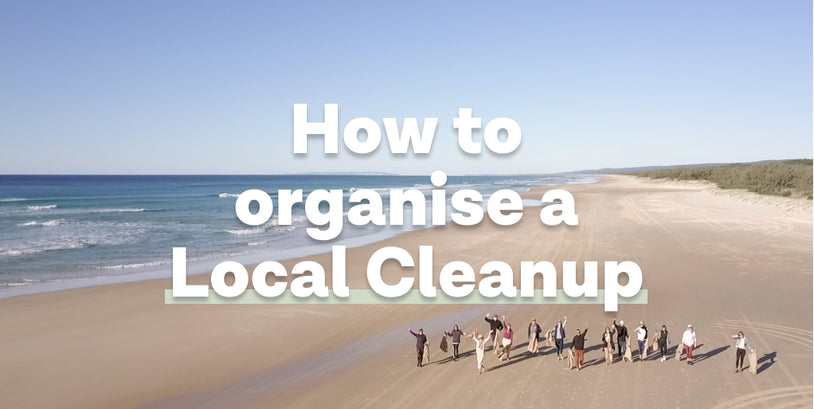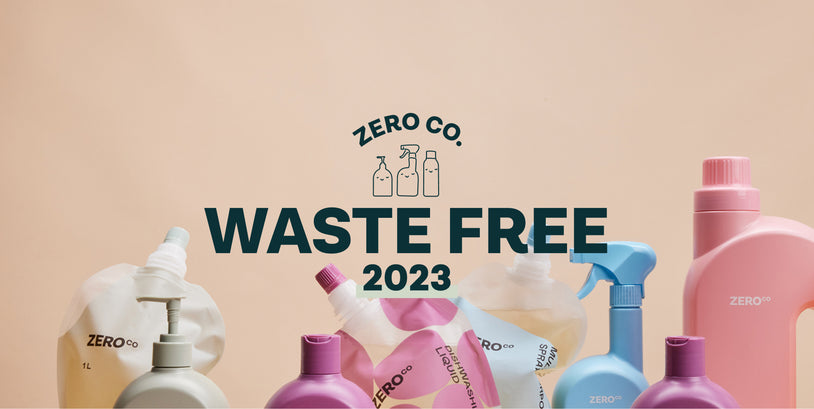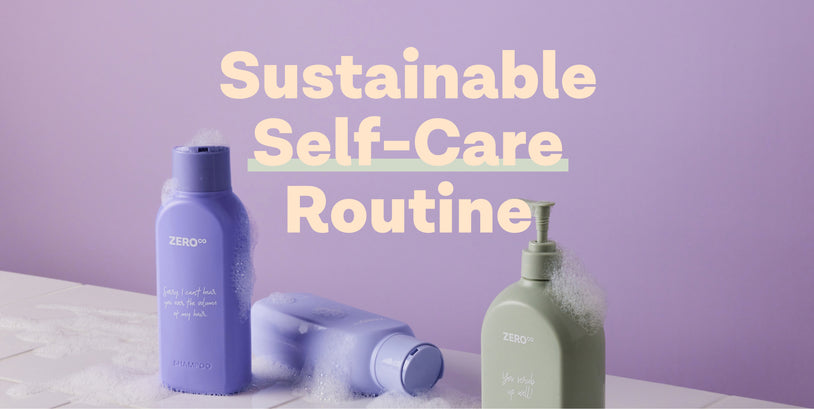That’s right, biochemist. Josefina (Jo-Jo) is more than a pretty face and another one of Zero Co’s most loved Customer Happiness Heroes. Her heartland just happens to be biochemistry.
She helps us take the long words (and even longer winded explanations) and makes it easy to read and understand for everyone. You’re welcome.
Listen up as Jo-Jo unpacks why plastic has got such a bad wrap and what the difference is between recycling, upcycling and downcycling.
Keep your enemy close.
At Zero Co, our mission is to untrash the planet by stopping the production of new single-use plastics, as well as cleaning up the plastic junking up our oceans. Our closed loop system is one way our business offers up a solution to the current plastics problem. I believe that in order to defeat the enemy (that’s plastic) you have to be close friends with it. So, this information is my attempt to help you understand a bit more about it, so you can take action and help too.
Um, what actually is plastic?
Plastic is a noble and robust material. In theory it should be great. We humans have benefited from it greatly, especially for use in the medical and building industries. But too often it’s used the wrong way.
One of the main characteristics of plastic is its durability. It’s a bit of a conundrum though, because the reason why it’s great is the same reason it’s become a BIG issue for our planet.
I believe the plastic conversation should be around how to use it, how to make the most of it, and definitely how to avoid only using it once.

The myths of recycling
Unfortunately, there’s been a bit of miseducation around recycling. There are hundreds of different types of plastic out there. Knowing more about the diversity in plastic types is key to realising how difficult it is to recycle it. It leads to the never-ending illusive question: Can we really recycle our way out of the plastic problem? I’m here to say, nope, not really.
The single best way to improve the planet's current plastic problem is to stop single-use. Or, as Zero Co does, work towards a closed loop system where we turn old bottles and plastic bits into new bottles, instead of something else. Check out this blog on our approach to Ocean, Beach and Landfill (OBL) plastics for more info. We’re turning the waste problem into a solution!
Define recycling, please
A common definition of recycling is a process where we turn waste into reusable materials. Taking a ‘used’ object, breaking it down into smaller parts and creating new material out of it.
Firstly, when we truly ‘recycle’ we turn the spent material into the same object, so we get an equal value.
Upcycling and downcycling, which are often mislabeled as recycling, are quite different. They refer to reprocessing with an outcome that provides a different value.
Upcycling allows for products of higher value and downcycling is the process that converts a material into something of less value.
One of the keys to saving our planet is understanding these differences.
Not all materials are made equal
We focus a lot on recycling plastic at Zero Co, but it’s actually glass and metals like aluminium that can be recycled forever. You can literally melt these materials down and create the same object over and over again without any impact to the quality.
When it comes to recycling plastic though, the story goes down a different path. It’s probably more accurate to call it upcycling or downcycling, because here’s what happens to plastic:
A water bottle made from plastic (PET type) is used once and thrown away. It can easily be melted down to create new bottles. Yay! However, unlike aluminum or glass, when PET is heated, it becomes weaker every time it goes through the process. Meaning, it can’t be recycled indefinitely or forever. Like paper, you can only recycle plastic around five-to-seven times. Then, we end up with plastic waste with no purpose and no saving the planet.
So then what happens?
Best case scenario, plastic bottles might end up being used as raw materials for clothing in a fleece jacket or swimming suit. In other words, they get downcycled. This seems super high-tech and fancy, but in reality it’s really not so awesome for the planet, because when these garments get washed, they release microplastic fibers into the wastewater system and the ocean. Yikes! Not to mention, when people don’t want that piece of clothing anymore most of it gets thrown into landfill. Double doo-doo.
So, to cut a long story short, the plastic we thought we were recycling (remember it was originally a single-use water bottle) eventually ends up making its way to our waterways and landfill.

Hold up. Rewind. Tell us more about downcycling
Downcycling is the process that converts a material into something of less value. Often the characteristics of the material prevents it from keeping its former durability once reprocessed, making it less valuable. Plastic and paper are examples of materials that don’t recycle well and are often downcycled instead.
A great example that illustrates this is the creation of a newspaper, which is downcycled from higher grade writing paper. Other instances are the production of clothes from ‘recycled’ plastic bottles and making furniture and playground equipment from soft plastics.
When downcycling happens, we may be ‘reusing’ old materials, but we’re not making the same stuff. This can only mean one thing – the original plastic bottle is still being made from fossil fuels. EEEEK! Downcycling might eliminate some waste, but it’s not circular.
All of the above are great short term solutions, but they fail at being sustainable practices for our future. If we can’t create a circular economy, we can’t save the planet. This is why single-use plastics must be stopped!

Hang on, the famous recycling symbol is a closed loop?
This is BS, sorry. There are a lot of misunderstandings around the meaning of that little triangle with a number in it. Known officially as the “chasing arrows logo” it simply identifies the type of plastic resin used in the product. Let me bust some myths here:
- It does NOT mean the item is made from recycled plastic.
- It does NOT mean it will get recycled if thrown in your recycling bin.
- Anyone can use this symbol, it is not regulated.

What about upcycling? That’s real, right?
In short, yes. It has a greater benefit in that waste can be used without breaking it down or destroying it. It allows for products of equal or higher value. However, even upcycling isn’t circular. Because again, much like downcycling, when we upcycle we’re not making the same stuff, so new materials will need to be employed to create the original thing. Make sense?
So stopping single-use and going closed-loop are the only ways to repair the plastic mess?
100%. I believe we all must work towards a closed loop system. Where old materials (say bottles) are made into new bottles, instead of creating new ones every single minute. If we can do this, we can literally turn the waste problem into a solution.

Jo-Jo’s top tips for doing your bit.
- Absolutely say NO to single-use plastics!
- Reach out to your local council to find out what types of plastic are accepted and recyclable in your area.
- Raise awareness among your fam and friends so they can ditch SUP too!
- Shift your way of thinking and your habits from dispose to AVOID and REUSE!
Before you go!
First, thanks for reading this far. If you’re an expert on this subject and feel any part of the information included is not completely accurate or could be waaaaay better, please reach out! We’d love to hear all about it, so we can make revisions and share the best information available out there for everyone.
Reading recommendations
War On Waste - Great Aussie docuseries
The Story Of Plastic (Documentary Film) - Deia Scholossberg
Plastisphere - Podcast
What to do about microfibres - Good on you Web
Know your plastics













.jpg?v=1649893142)
-copy.jpg?v=1649890428)
